Curaçao’s Only Travel Guide You Need For A Great Trip in 11 Easy Steps
- Destinations Americas
Cruisit Team
- July 28, 2022
- 0
- 4854
- 71 minutes read
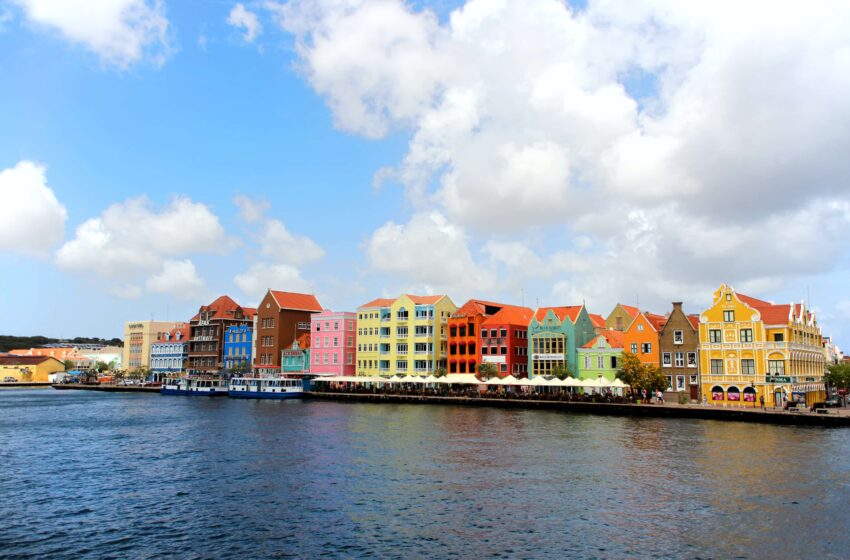
Curaçao’s Background
A few tiny islands in the Southern Caribbean were once inhabited by Arawak people from the South American continent. It was initially discovered by Europeans in 1499 and colonized by the Spanish and, subsequently, the Dutch, who developed it as a major trading center for the Dutch West India Company. The Netherlands and the tropical islands of Curaçao, Aruba, and Sint Maarten are today the vestiges of the Kingdom of the Netherlands, which was once a large empire.
The island had one distinct advantage for the Dutch: it had one of the best natural harbors in the West Indies. A waterway, Sint Anna Bay, runs through the southeastern part of the island to a wide, deep, nearly enclosed bay called Schottegat, which is home to the capital city, Willemstad. The Dutch were drawn to the Caribbean by the need for salt to preserve herring. From 1660 to 1700, the Dutch West India Company thrived; the slave trade grew; and the port of Curaçao was opened to all countries, both to accept incoming food supplies and to dispose of products from South American plantations. The island was frequently invaded by warring privateers and suffered throughout the wars between the English and the Dutch. It’s been in Dutch hands since 1816, and the Dutch king is the head of state, represented by a governor, and the prime minister is the head of government.
Once the epicenter of the Caribbean slave trade, Curaçao was severely harmed by the abolition of slavery in 1863. The construction of oil refineries to service the newly discovered Venezuelan oil riches in Lake Maracaibo revitalized Curaçao’s (and nearby Aruba’s) prosperity in the early twentieth century. Despite the government’s efforts to diversify the economy, all consumer items and food must be imported. Because the lake in Venezuela is too shallow for ocean-going ships, the oil was transferred to Curaçao for refinement and transshipment in smaller boats.However, tourism and Willemstad’s importance as a Caribbean finance hub imply that the island can still grow. Saint Martin is split with France; its southern quarter, Sint Maarten, is part of the Netherlands Antilles, while its northern piece, Saint-Martin, is part of Guadeloupe (A French territory).
Curacao, a well-known Caribbean island, part of the ABC Islands north of Venezuela, including Aruba and Bonaire. Curacao has a unique, distinctive culture. The buildings’ architectural styles provide a distinct atmosphere filled with gorgeous pastel shades. The culture present on the island is distinct. Even the island’s native language, Papiamentu, is unique. It is a wonderfully distinctive blend of Spanish, Portuguese, English, Dutch, African, and other languages. In addition to Dutch, English, and Spanish, most residents on the island speak Papiamentu. Despite the multiplicity of languages, nearly everyone speaks English, making communication fairly simple.
Curacao is also conveniently located outside of the “Hurricane Zone,” so you can visit all year without fear of a significant hurricane. Although hurricanes are uncommon, they do occur on occasion. It has a tropical savannah climate, with a dry season from January to September and a rainy season from October to December. Throughout the year, the temperature remains pretty consistent, with a minor dip during January.
“A vibrant, intricate, and gorgeous nation. Curaçao is a land of unspeakable allure. A Dutch flare that is both majestic and frail, a satisfying piece of heaven seen on every beach.“
With its wonderful Dutch colonial architecture, lively art and culinary cultures, and superb historical museums, Curaçao seems like a small slice of Europe on the edge of the Caribbean. That is, a small bit of Europe with wonderful secret beaches, fascinating caverns, incredible snorkeling, and diving opportunities, and a wild, unspoiled shore lined with spiky cactus and whiptail blue lizards.
The beaches on the island are focused on the island’s southern and western edges. Many of them are distributed between Rif St. Marie and Westpunt. Hato International Airport serves as the island’s primary gateway. Plaza Margareth Abraham is located in the northern part of the island, just outside of the capital city of Willemstad.
With a range of transit alternatives accessible to visitors, getting around the island is generally simple. Although public buses are the most cost-effective alternative, cabs are widely accessible and handy for anyone seeking to venture off the main path. Renting a car is also inexpensive and convenient.
Curaçao also has a thriving industry outside of tourism, which means that Willemstad has factories, worn-out sites, and occasionally severe traffic. The island’s main goal is not to cater to tourists, which gives it more authenticity than its neighbors. So, if you’re searching for a Caribbean location that’s busy establishing its own pace, a place where the adventure is a little more unfettered, Curaçao is the place to be.
To enjoy Curaçao the most, you will want to stay on the move in order to see and do as much as you can of what Curaçao has to offer for tourists. In this Cruisit Curaçaon travel guide, we give you a plan that falls halfway in the middle, with a good mix of leisure and discovery. Enter the country and fully experience and explore this Caribbean dream destination. Curaçao’s trip plan that we provide below is best experienced in the country’s high season in the summer, but you can also enjoy the shoulder season too. Your Caribbean fantasies will come true, with warm days beside sapphire waters in the shade of historic buildings, and surrounded by vintage vehicles.
Also, in our travel guide to Curaçao, we will provide you with all the information you will need to navigate the country at ease. Curaçao’s highlights, tips, transportation, top places and attractions, a handcrafted itinerary in Curaçao, and more will be provided for you as you read through. If you are excited enough by now, let us dig right in!
- Visit Blauwbaai Beach, one of the most beautiful in Curaçao
- Unwind at Daaiboo Beach, a more laidback option
- Explore the Mushroom Forest’s diversity
- Enjoy the Curaçao Carnival in January
- Stroll around Willemstad’s beautiful Dutch buildings.
- Kayak up and down the shore.
- Check out the Queen Emma Bridge.
- Climb Mount Christoffel.
- Tour of Fort Amsterdam Park Shete Boka
- Go to Saliñas
- Take a journey to Klein Curaçao.
- Pay a visit to the Kurá Hulanda Museum.
- Regardless of your budget, the island offers a variety of hotel and resort options, ranging from all-inclusive resorts to rented apartments and modest motels, depending on the type of lodging you need.
- There are several stores in Willemstad that sell anything from apparel to souvenirs to crafts and more. You have a plethora of possibilities at your disposal.
- Despite the fact that Curacao is one of the safest destinations to visit in the Caribbean due to low crime, petty theft is still to be expected if you leave your belongings out in the open. Scams are also uncommon.
- Because almost everyone knows English on Curacao, communication is simple.
- The buses are distinguished by the cardboard with the number of stops printed on their windshields. The Otrobanda Station is just across the street from the Rif Fort, while the Punda Station is directly across the street from the Circle Market. To the east is Punda, while to the west is Otrobanda.
- Avoid cabs if you’re on a tight budget; they’re pricey.
- Renting a car is the most cost-effective and convenient method to travel.
- Visit during the off-season – Prices for accommodations and activities can be up to 50% lower during the off season, so avoid the busy season to save money.
- Bring a water bottle to save money on water (The water is drinkable from the tap)
- If you are a backpacker or on a tight budget and wish to visit Curacao, you can use Couchsurfing to stay with a local. You will also have access to insider information and recommendations.
Crime & Scams in Curaçao
Most visitors to Curaçao have a pleasant experience. However, petty thievery and street crime are a source of worry. Violent crime exists among participants of the illegal drug trade, although it seldom affects visitors. The main tourist destinations are typically safe, although normal care should be used. The Dutch Caribbean islands are still utilized to carry illicit narcotics from South America to Europe and North America. You should be especially mindful of this issue and never leave baggage unattended. You should never discuss or agree to carry anything for anyone. Some airports have body scanners, and you may be obliged to use one. All luggage and people from the Dutch Caribbean are routinely screened by Dutch officials.
Be vigilant, particularly if you are in cramped public places, near official buildings, crowded attractions, or on public transportation. Avoid poor areas of the city. Take care on city streets, especially after dark or if you are on your own. Don’t carry large amounts of money or wear valuable watches or jewelry. Avoid using your mobile phone in the street. Also, please don’t brag and show off in Curaçao. It’s a simple place, for people to kickback, so be humble.
Healthcare in Curaçao While Traveling
Curaçao’s healthcare system is modeled after the Dutch system. The primary care physician serves as the system’s gatekeeper. Curaçao’s medical services are comparable to those of North America and Europe, and it may cooperate with any international health insurance provider. Curaçao has three hospitals. Curaçao Medical Center is the island’s main hospital, including a large emergency room and the island’s sole critical care unit. Taams Clinic and The Antillean Adventist Hospital both provide a comprehensive range of medical services and specialties. Curacao provides high-quality medical treatment with competent physicians at a reasonable cost.
Before every trip, make sure you are up to date on all routine vaccinations. Among the key recommended vaccines globally are chickenpox (Varicella), diphtheria-tetanus-pertussis (DTP), influenza (flu), measles-mumps-rubella (MMR), polio, hepatitis, typhoid, and shingles. If you will be in contact with wildlife, you may want to consider getting a rabies vaccination.
When visiting Curaçao, you are not legally required to purchase travel medical insurance and can be denied entry if you don’t have one. Also, it is always important to have comprehensive medical coverage when traveling because you never know what you could encounter while overseas.
Only eat foods that are cooked and served hot, avoid food that has been sitting on a buffet, and eat raw fruits and vegetables only if you have washed them in clean water or peeled them.
Only drink beverages from factory-sealed containers, avoid ice because it may have been made from unclean water, and only drink pasteurized milk.
Always wash your hands with soap and water for 20 seconds, especially after using the bathroom and before eating. If soap and water aren’t available, use an alcohol-based hand sanitizer that contains at least 60% alcohol. Also, keep your hands away from your face and mouth.
Curaçao’s climate is tropical, with temperatures ranging between 30 and 33 degrees Celsius during the day. Curacao’s weather is pleasant nearly all year, however, it can occasionally become overly humid and sticky. Curaçao is situated outside of the hurricane belt, so tropical storms rarely occur.
Shoulder Season
Curaçao’s shoulder season spans from mid-April through June, so the beaches and other attractions will be less crowded, but the streets will not be completely vacant. Prices may decline somewhat, making it a more appealing option for people on a tighter budget. The weather is also extremely nice. Visitors to Curaçao between May and November may additionally save up to 25% on accommodation and activities. Temperatures are still warm and pleasant.
High (Peak) Season
The best time to visit Curaçao is from December to mid-April, when it is considered peak season. This is the best time to visit this island paradise because most activities are up and running, including Curaçao Carnival, which culminates in a big street parade in March.
Peak season in Curaçao sees hotel rates and activity pricing skyrocket, and it keeps getting lower starting at the shoulder season until it reaches its lowest in the low season. The water clarity, on the other hand, is great for diving and snorkeling in the high season.
Off-Season (Low Season)
For budget travelers and backpackers, Curaçao is best visited between June and November, when it is less crowded. During these months, you’ll see the lowest flights and hotel prices, with rooms sometimes priced at 50% less than they are during peak season. July, August and September can see some rain, although not heavily. But, in general, the weather is hot and humid.
By Plane
Curacao has only one airport, Curacao International Airport, which manages all international flights into or out of the island. Curacao has no internal flights, and all places are easy to reach from Curacao International Airport, which serves as a major transit center.
By Boat
People who want to enter Curaçao with their own yacht or charter should fill out an online form before checking in, which will save them a lot of time at Customs, but it is not usually required. You must register all members and crew at the Immigration Office, report items at the Customs Office, and clear in the boat and get an anchoring authorization from the Harbor Master.
You must have the ship’s registration documents, passports for all crew members and other passengers, and clearance papers from the previous port of call. You will be denied entrance into Curacao if you do not have this paperwork from the preceding port. This is especially important for cruisers arriving from the US Virgin Islands or other US territories where exit clearance paperwork is not immediately issued.
Many yachts choose to anchor at Spanish Water and drive to town for clearance since tying up to the quay in Willemstad for clearing is both inconvenient and risky owing to the high wash from commercial vehicles.
Getting around Curacao is quite simple, whether people want to go independently or by public transit. To make the most of their trip, visitors frequently combine the usage of Curacao’s buses with taxi service or vehicle rental.
By Car
If you intend to travel outside of large urban centers such as Willemstad, renting a car is a great investment. Car rentals might be expensive, but you are not required to keep the vehicle for the duration of your trip. You may hire a car at the airport; Alamo, Avis, Budget, Dollar, Hertz, and Thrifty are among the main car rental companies represented. There is also a dense concentration of automobile rental companies on the island’s eastern side, near the cruise ship port. Rates vary according on the season and the operator, but you should budget between $39 and $69 each day. Your US driver’s license is adequate for driving in Curacao, according to the US State Department.
By Taxi
Taxis are convenient for short trips in Willemstad, but longer journeys and island visits will drain your money. Taxis in Curaçao are not metered, however drivers may carry pricing sheets for various locations. A cab journey to the island’s northern tip would cost you between $80 and $100. Cab drivers hike prices by 25% before 6 a.m. and after 11 p.m., or if you have more than four passengers. Taxi drivers also anticipate a 10% gratuity. It is essential to settle on a fare before getting into the cab.
By Bus
Curaçao has a minimal public transportation system. The big “Konvooi” buses provide transportation across Willemstad, having terminals at Punda and Otrobanda. Convoys, on the other hand, only operate roughly once an hour during the week and considerably less often on weekends. Convoys will also take you west, although service along these routes is limited (every two hours or so). One-way costs vary, but are often 2 guilders (approximately $1.15). You may also take the smaller “buses” (really nine-person vans designated “BUS”), which run more regularly than the convoys but on an ad hoc basis.
SIM Cards & Calls in Curaçao
A Curaçaoan SIM card costs 25 ANG (14 USD) and is available via Digicel and Flow/Chippie (previously UTS) retailers and resellers, including electrical stores (for Digicel only). SIM cards are also available at Curaçao/Willemstad International Airport (CUR – Digicel exclusively). Bundles begin at about 6 ANG for around 1 GB of data good for one day. Flow also offers tourist plans for 16 ANG that include 1.5 GB of data and are good for 7 days. Digicel is typically more expensive and provides less for the price.
Alternatively, you may also get a prepaid eSim card from a company like Airalo, SIMCorner, HolaFly, or Nomad. All the providers offer data-only plans that may be used with an eSim-enabled phone, so make sure your phone is compatible. It is also possible to sign up for a Solis WiFi Hotspot. Check before you travel because they only serve select areas. Airalo provides the most extensive coverage of over 180 nations.
Local Internet & WiFi in Curaçao
Almost all hotels and other accommodation options will have some type of internet available for you to use, and notably, in downtown Willemstad, there will be several open wifi networks. Cell phone reception is generally strong throughout the island, however, some outlying spots may have less reliable service than in downtown Willemstad. Internet speeds range from 25 Mbps to 50 Mbps, which is enough for several users.
Top Places in Curaçao

Christoffel National Park
Christoffel National Park is managed by Carmabi Foundation. Boca Grandi is an Indian cave in the park where you can view paintings painted by Arawak Indians. The park also includes Mount Christoffel. At 1292 feet, this is the highest point in the country.
Daaiboo Beach
If you find some of Curaçao’s more popular beaches to be overcrowded, travel to Daaiboo Beach. You’ll be able to relax on smooth dunes and swim in a turquoise sea in relative tranquility. A lot of locals congregate here, and the shallow, clean water is ideal for snorkeling. There is no admission fee, and the food and drinks nearby are less expensive than at Blauwbaai.
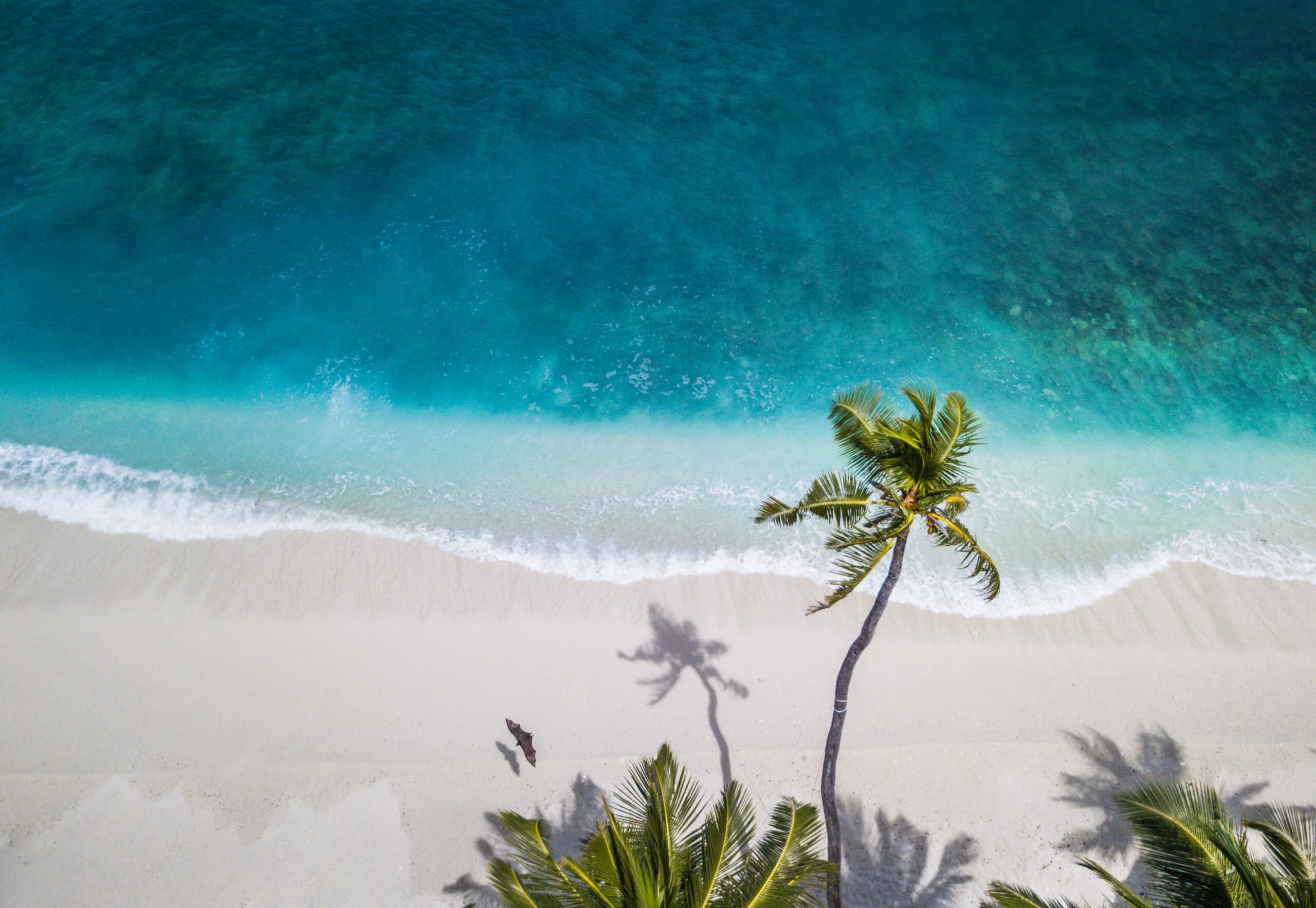

Klein Curaçao
Curaçao and Klein. Curaçao are separated by only 15 miles of ocean, but the island of Klein is nearly entirely abandoned. Klein was a stop on the Dutch West India Company’s slave trade in the 17th and 18th centuries, and many African slaves were buried there. The white sand beach here is the longest on the main island, and the coral reefs, beautiful seas, and rich marine life make it worthwhile to visit.
The Mushroom Forest
The Mushroom Forest in Curaçao is teeming with marine life such as sea turtles, porcupine fish, and parrotfish. The corals’ bases have been steadily worn over time by waves, fish, sponges, and clams, giving the impression of gigantic mushrooms sprouting on the ocean floor. A two-tank dive costs around 160 ANG.

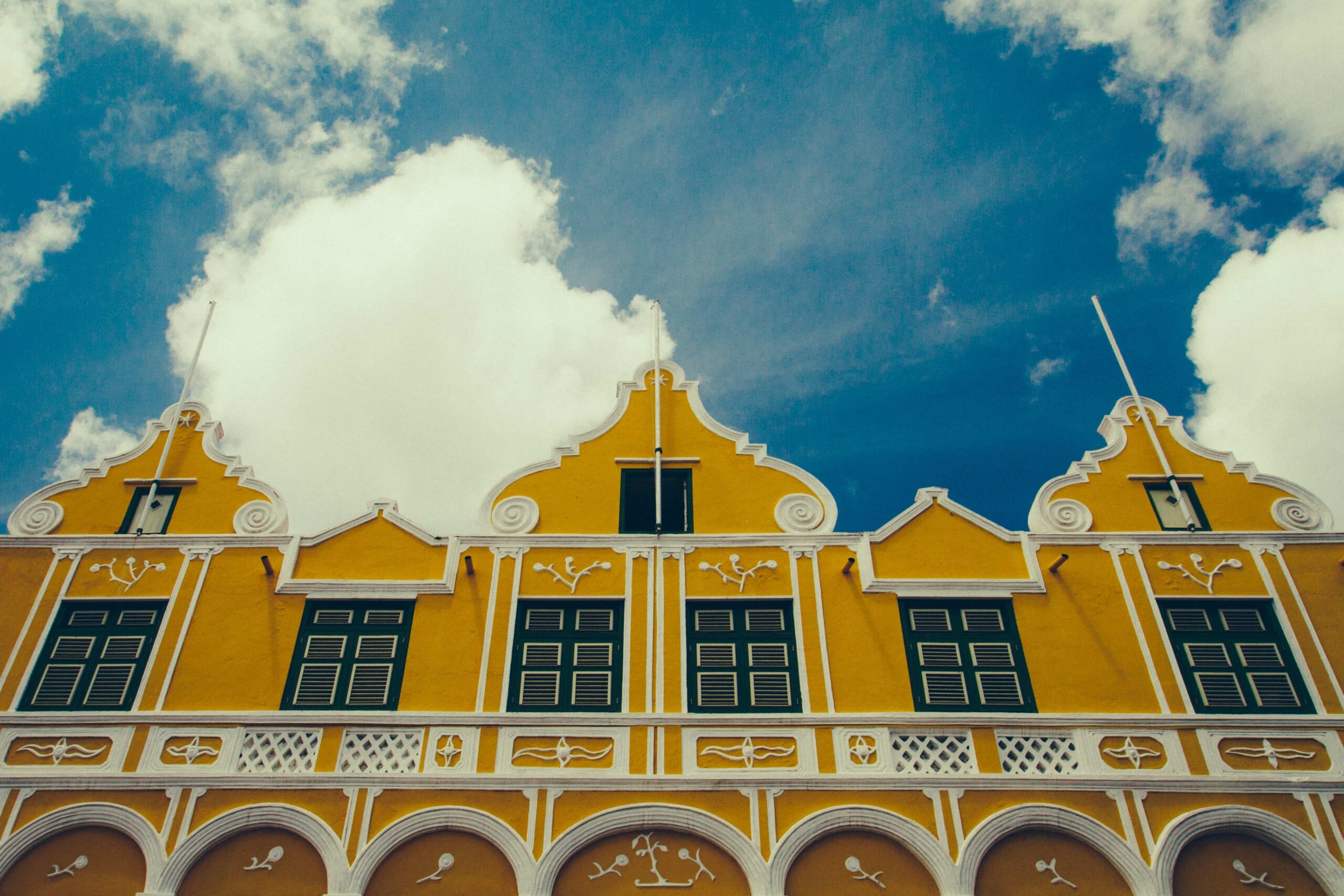
Fort Amsterdam
Fort Amsterdam, built in 1635, is Curaçao’s oldest fort. It is a UNESCO World Heritage Site and was once the most significant stronghold on the island. It now houses the governor’s residence, many government buildings, and the Fortkirche, Curaçao’s oldest church. You may go inside the church, which has its original pulpit and a tiny historical museum. It is free to enter.
7-day Itinerary in Curaçao
Day 1
Arrive at Willemstad, Drop your bags, and Unwind on heavenly beaches!
Once you arrive at Willemstad, head to your accommodation of choice, drop your bags, and dedicate your first day to beaches! Since the flight is likely long, you will want to immediately see some of the most gorgeous parts of this paradise. So what better way to unwind after a long trip than the sun, sea, and sand?
Head to Grote Knip or Kleine Knip, or both. These are the island’s most popular and most visited sands. They both offer what you expect from a beach in paradise. Brilliant blue water that’s ideal for snorkeling, so don’t forget your equipment. Sunbeds and umbrellas are available for rent on both the large and small beaches. One thing to note is that Grote Knip has a restroom and some amenities, however, keline Knip has nothing. In any case, since there aren’t much services on the beaches, make sure you get sufficient water and snacks with you for the day. Both beaches are located at Westpunt and takes around 2 minutes to get from one to the other by car.
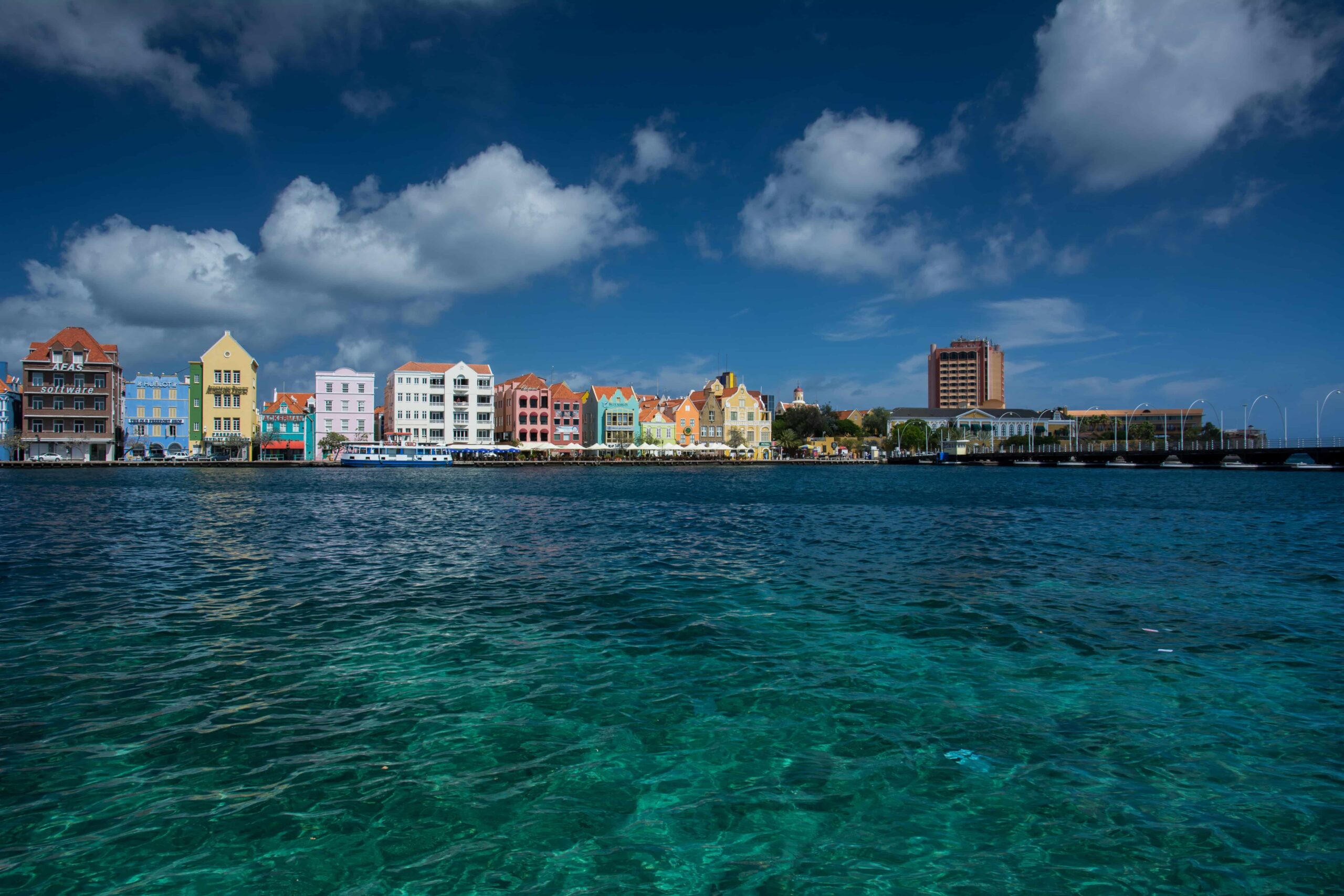


- Backpacker:
- Budget:
- Mid-range:
- Luxury:
Hostel la Creole
First Hostel Curaçao
Bed & Bike Curaçao
Willemstad Resort
Renaissance Curacao Resort and Casino
BijBlauw
Avila Beach Hotel
Baoase Luxury Resort
Oasis Coral Estate Beach, Dive & Wellness Resort
When it becomes dark, a foreign city may be twice as dangerous - especially if you don't understand the language and are unfamiliar with the area. There is no reason to be alarmed about walking home alone in the dark as there is not enough crime recorded in Willemstad to warrant any bit of worry. You can walk safely at night and never worry about crowded areas or unlit alleys or streets, but you can always take a taxi, if you don't feel comfortable. However, be wary of petty crime by taking precautions mentioned in the safety section above.
Day 2
Exploring Willemstad
Now that you’ve gotten used to island living, it’s time to visit Willemstad, Curaçao’s capital. The city, like the rest of the island, is brimming with color and positive feelings. You will have a great time viewing the colorful buildings dotting the islands and of course snapping pictures for social.
Willemstad has a lot of exciting things to do and see besides wandering around the colorful streets. There’s something for everyone, from shopping and visiting local markets to strolling the iconic bridge or eating lunch by the river. Because the city isn’t very large, most individuals can stroll from one location to another easily.



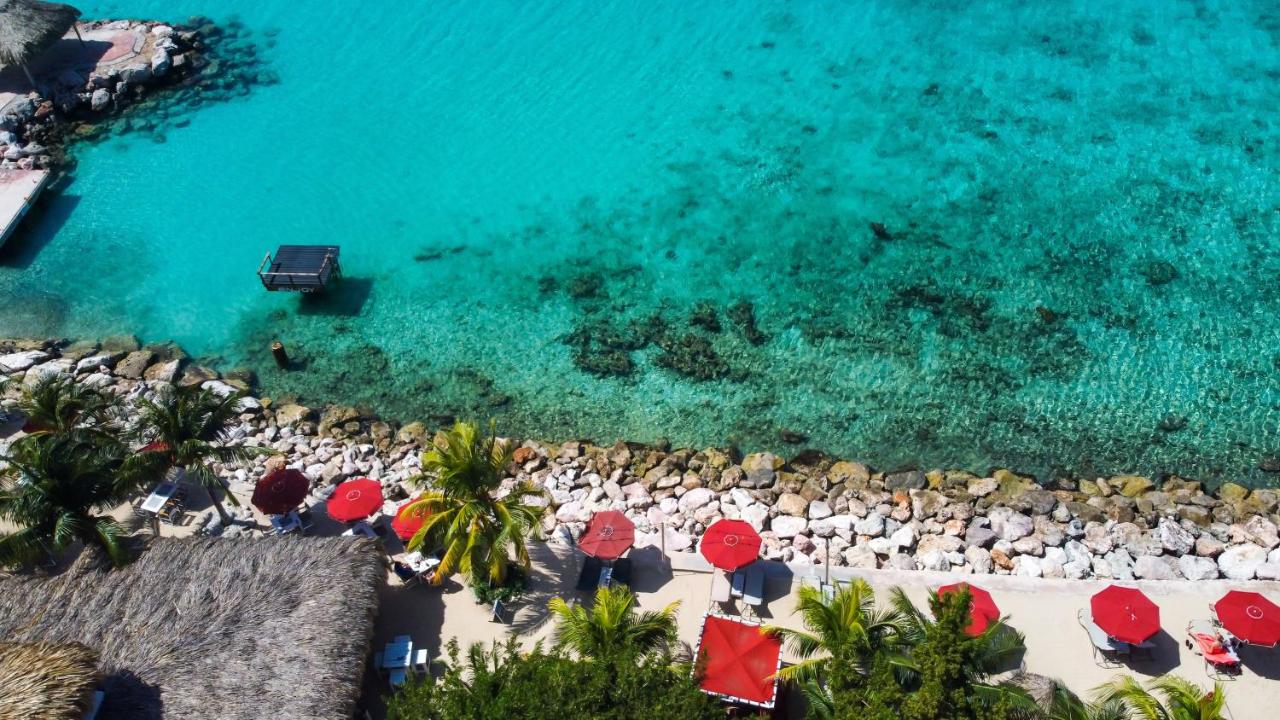
Day 3
Off to Westpunt
On the third day of your Curaçao itinerary will all be about experiencing the luxury Caribbean island lifestyle. If you’re on a budget, you will want to spend at least one day visiting Oasis Coral Estate. With a stunning opulent collection of homes located directly on the beach in Westpunt, , just 50 minutes away from Willemstad. If you have a bigger budget, you might want to consider staying for more than a day.
Start your day with a lovely breakfast at Karakter which serves amazing food and a nice service, unlike any other you’ll experience on the island. As you eat, you won’t be able to take your eyes off the views of the tranquil sea and palm trees surrounding you. When you’re done, go to the restaurant’s private beach, get a sunbed, and ubrella, and spend your morning dipping in the waters, relaxing, tanning, and of course snorkeling. You can even arrange a diving trip or class right outside the restaurant.
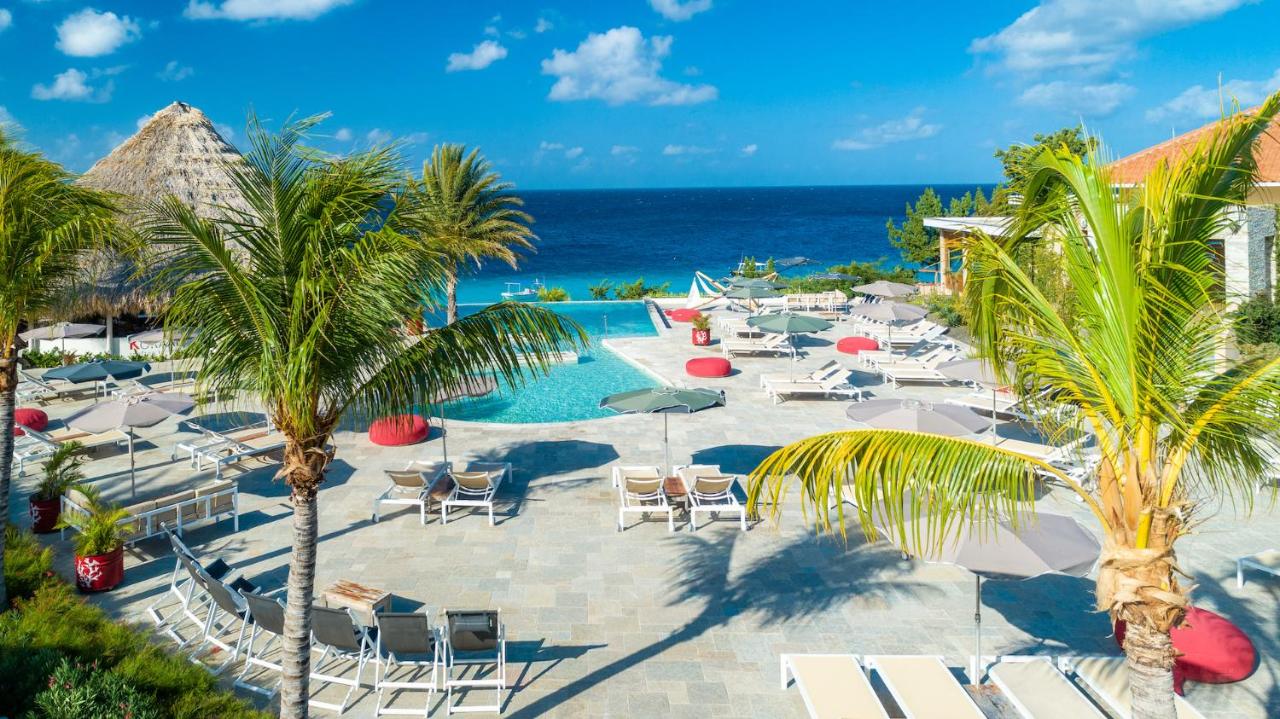

It is time to switch places in the afternoon. Head to Koraal Rooftop Terrace, a popular place amongst tourists, mainly for its lovely infinity pool. A view from the top can prove to be more appealing as this viewpoint encompasses much of the west side of the island. Watch as boats pass by and people plunge into the water, or look for iguanas basking in the sun. Keep at it until sunset. You’ll love every minute of it with amazing music and nonstop service!
As dinner approaches, pick one of the two spots you’ve been to today. Alternatively, you can stick to one place for the entire day if you want. It is also worth noting that admission to the pool at Koraal is free if you spend at least 50 ANG (28 USD) per person on food and beverages at the pool bar. Otherwise, a 20 ANG (12 USD) extra per person is charged to the bill.
Day 4
Trekking Mt. Christoffel
Curaçao’s fourth day begins with a bang! Curaçao is known for its beautiful beaches and vibrant towns, but it is also a terrific area to go hiking. Who knew this island could be so varied! Take the trail that leads to the summit of Mt. Christoffel. Standing on top of the peak, 372m above sea level, provides breathtaking views over the island. It is unquestionably a Curaçao highlight!
The trek to the summit of Mt. Christoffel is difficult but achievable. You ought to be able to make it all the way to the summit with a fair degree of fitness. But don’t worry, today is by far the busiest day on this Curaçao itinerary. The park’s entrance fee is 25 ANG (14.50 USD) per adult, and if you’re interested in the island’s cultural heritage, visit the adjacent Savonet Museum. When a National Park ticket for the trek is purchased, admission to the museum is free. Within the museum, you can get a quick glimpse into the plantation past.
In the afternoon, get some well-deserved relaxation in the pool or beach after your morning workout or do whatever you like doing.
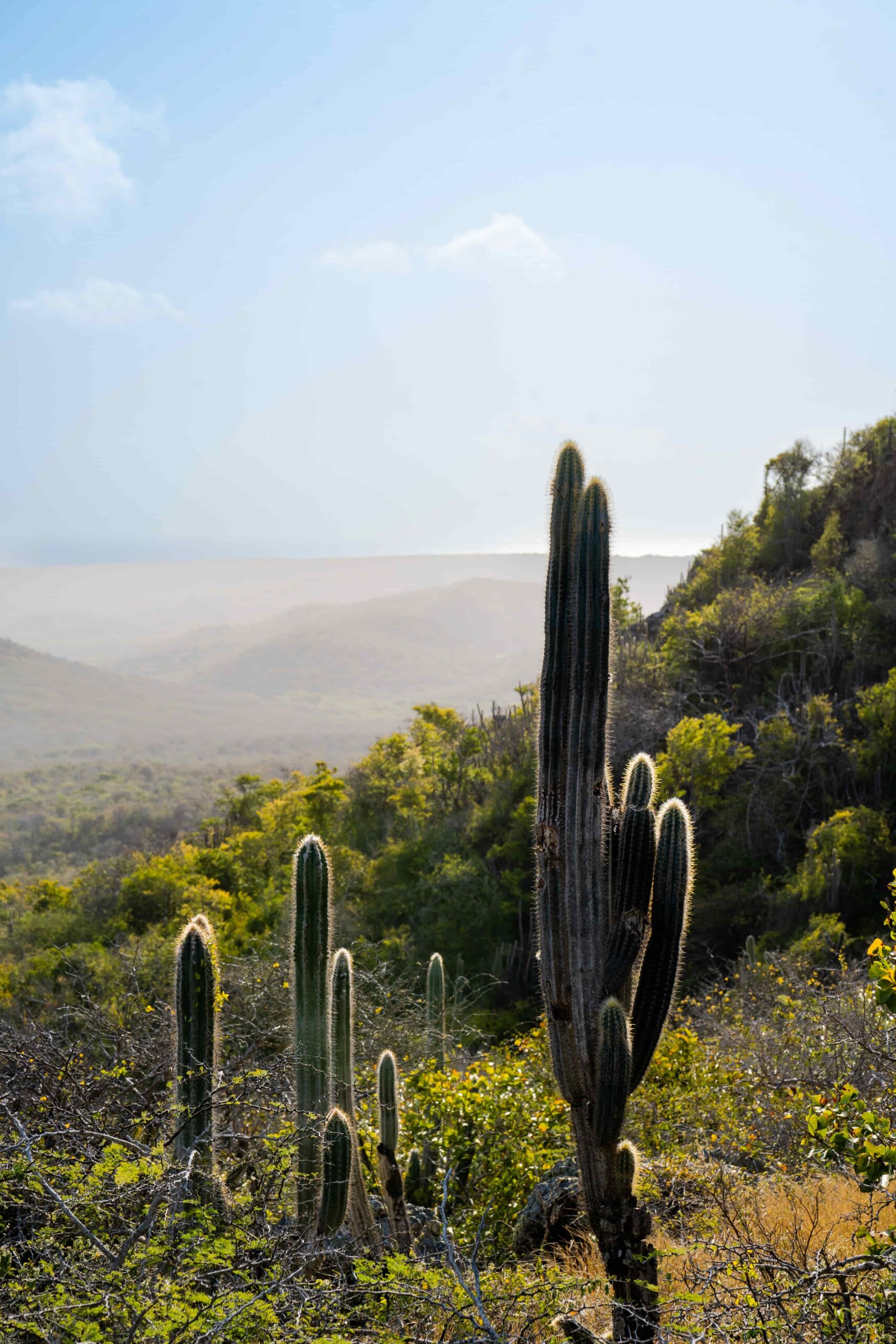


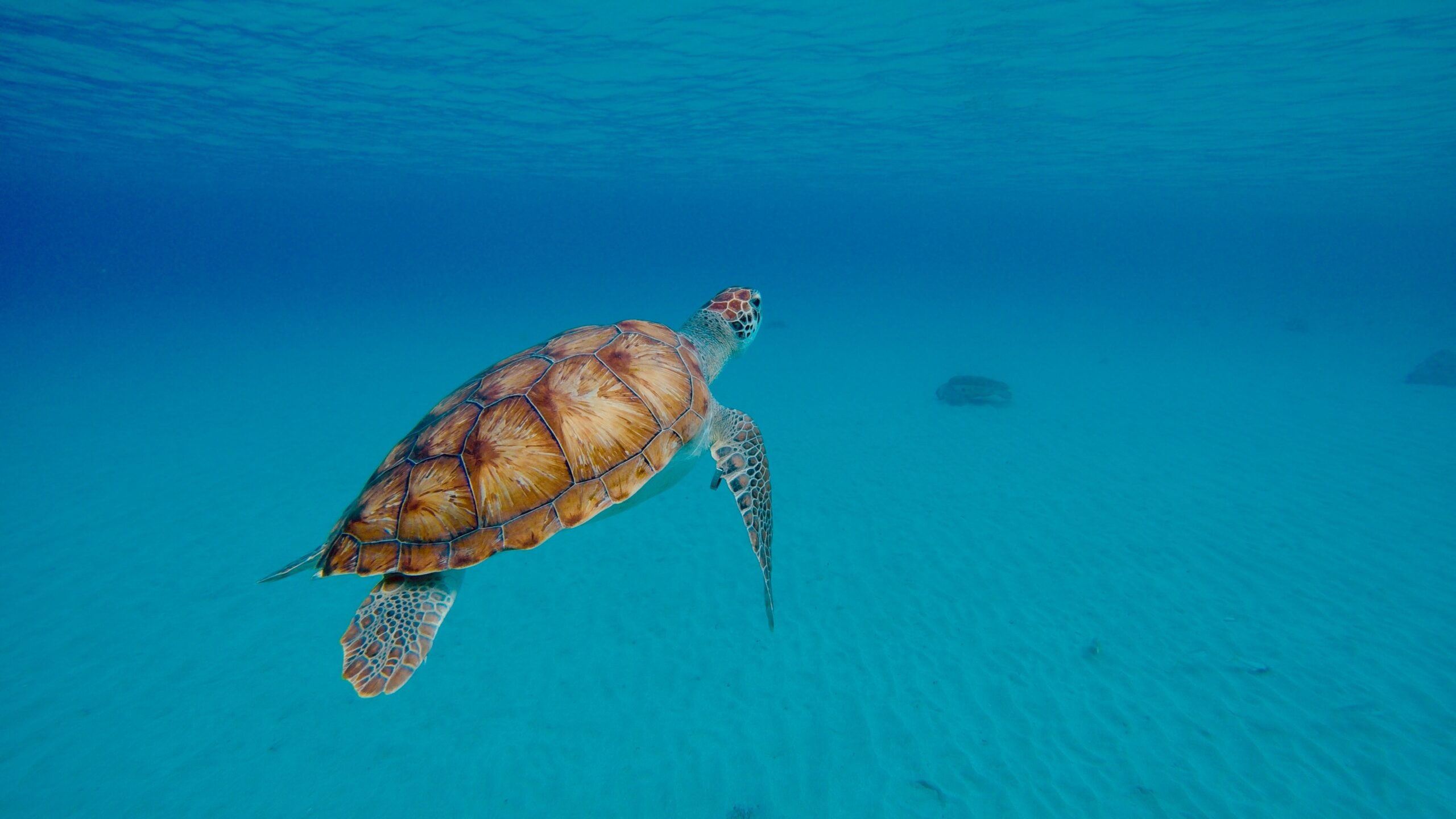
Day 5
Playa Day
Start your day enjoying breakfast and then it’s time for another day at the beach! You’re in Curaçao, a chunk of paradise, and mostly stunning beaches. Make your way to Playa Grandi and the first thing you will notice are sea turtles. If you love turtles like most people do, Playa Grandi is a must-see on your visit to Curaçao. Don’t forget your snorkeling gear. Even if you’re not the type of person who’s comfortable in the water, you will still enjoy the scenery. You will also get a great view standing on the jetty of the action taking place underwater. Just remember to respect wildlife and never take them out of water.
When you have had enough with turtles, head to Playa Forti. Despite being only a few minutes drive from Playa Grandi, this beach is a complete contrast. While Playa Grandi is a popular tourist destination, this beach is a remote and tranquil tropical paradise. It boasts wonderful sand and pure blue sea, just like many other Curaçao beaches. Spend the afternoon at the beach sunbathing and snorkeling.
Stop for lunch or dinner at the adjacent restaurant with spectacular views of the beach. Alternatively, you can take your leave and head to your own discovered spot or favorite restaurant.
Day 6
Explore the diversity of Curaçao
Right after your hearty breakfast, you will be exploring the different landscapes of the island. Shete Boka Park will likely be a great surprise for you with it’s diverse scenery and landscapes including Boka Wandomi, Boka Table, and Boka Pistol. The beaches you will discover are not ideal for swimming or sunbathing, nevertheless, they have their Charm. Walk to explore the various areas, or leave your car in one of the many parking spaces across the park and stroll from there. The admission fee is 17.50 ANG (10 USD) per person.
In the afternoon, head to Playa Lagun. A roughly 20-minute ride lays a hidden beach between two tiny rocks, azure waters trapped in between. Colorful tiny buildings and boats line the beach, giving it the perfect tropical atmosphere. There are many fish and sea urchins in the sea, especially near the rocks, so watch your steps. Playa Lagun, like other Curaçao beaches, has sunbed rentals. On one of the cliffs, accessible by stairs, there is a small café with food, drinks, and a bathroom.

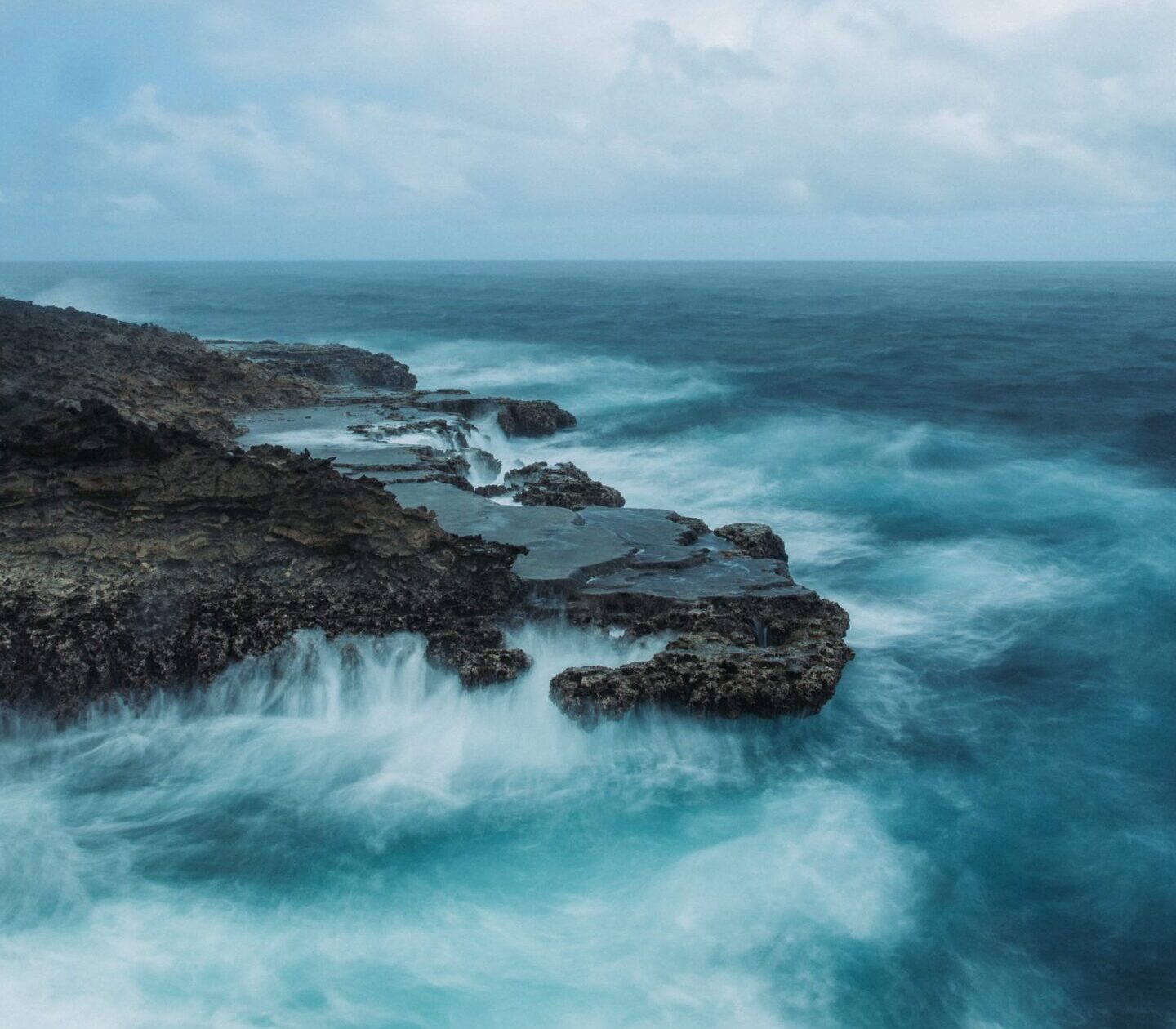

Day 7
Final Day
On your 7th day in Curaçao of your one week itinerary will delve into the last bits that remained unseen during your trip, and you will enjoy them. Begin by going to the Santa Martha Bay View viewpoint. This location provides a lovely view of green hills and azure ocean. On the slope, you can see little cottages and fishing boats. It is less well-known among tourists, making it an excellent hidden gem to explore during your visit. You’ll also have plenty of time to admire the scenery and snap photographs because there won’t be many people there. You can drive right up to the viewpoint, without walking.


Then head to St. Willibrordus. It takes around 15 minutes to drive there from the overlook. And the trip is definitely worth it because the town is home to a delightfully pink population: flamingos! Simply set your navigation to the Williwood letters to find them. This colorful Hollywood-style sign points to large pools of water where flamingos forage for nourishment. It may depend on the time of year that you visit whether you can go near the flamingos or if they keep their distance. Also recommend seeing the Church of St. Willibrordus while you’re there.
Next up, go to Playa Porto Mari, a beach is famous for its residents, piggy’s. They dwell in the region surrounding the beach and are known to appear on the beach on a regular basis. You may sometimes not find them, but you will still enjoy the beach’s beautiful shades of blue. The admission fee is 5 ANG (3 USD) per visitor.
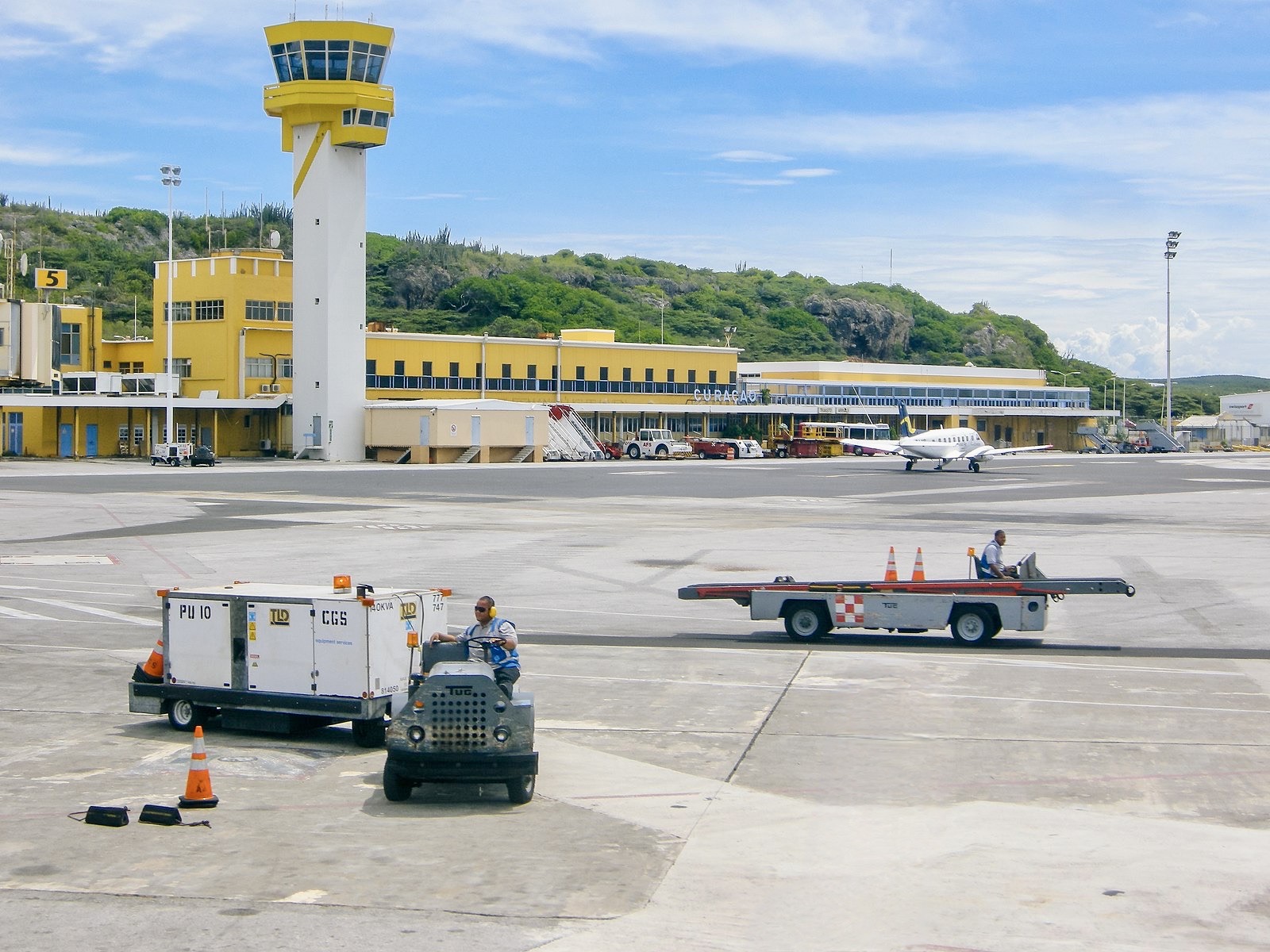
This 7 day itinerary hopefully made you enjoy your stay, but also discover a new culture. Whether your flight is on your final day or the next day, start preparing your things and head to the only airport on Curaçao, Curaçao International Airport which is around 20 minutes from Willemstad.
The Most Popular Food in Curaçao
Curaçao has been home to many diverse cultures, so classic Dutch dishes coexist with Afro-Caribbean, Venezuelan, and Indonesian influences to create a genuinely unique combination of flavors. Indonesian cookery, in particular, has had a tremendous effect on the region, which explains why sate and peanut sauce are so often used. There are many additional local Chinese options available across the city.

Stoba
Stoba is a wholehearted stew that is popular across the Caribbean. Stoba is commonly cooked using goat meat on Curaçao, however any meat and vegetable combination can be used. The spices used in this meal give it its particular flavor, therefore it may be rather spicy. Some Curaçao stews will also use papaya to give sweetness to the spiciness.
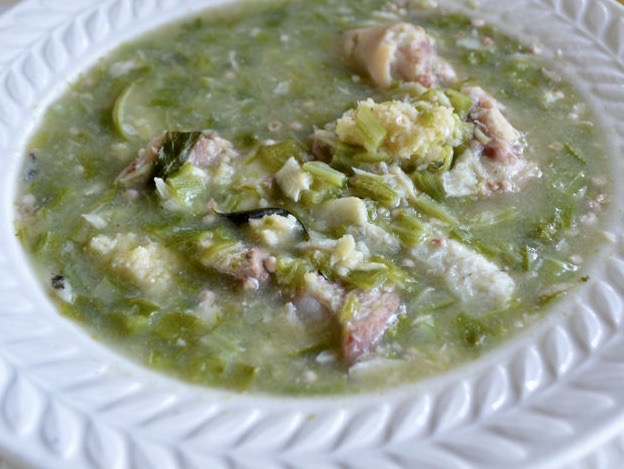
Guiambo
The consistency of this okra and seafood soup might be slimy. Its flavor varies depending on who cooks it and what seasons are used. Some soups have a sweet and tangy flavor, while others have a salty and spicy flavor.
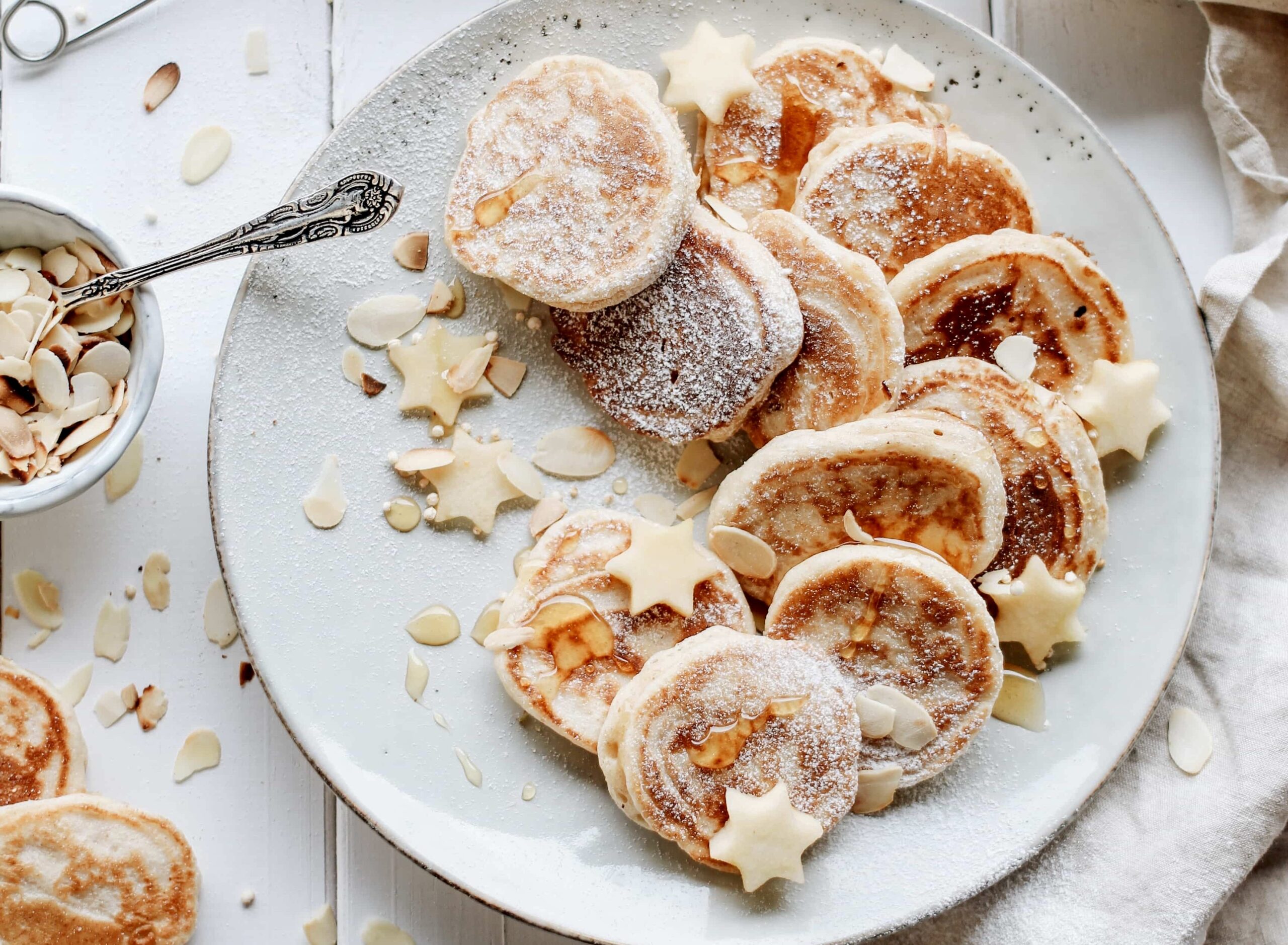
Poffertjes
Poffertjes are another Dutch treat (are you sensing a pattern here?) that you won’t want to pass up. They are essentially small puffed pancakes that are served hot and fresh with butter and powdered sugar. These scrumptious tiny delights are baked in their own pan at the ideal size. They’re an excellent on-the-go snack or post-meal dessert. They’re a popular beach snack on the island, so be sure to pick some up while touring Curaçao.
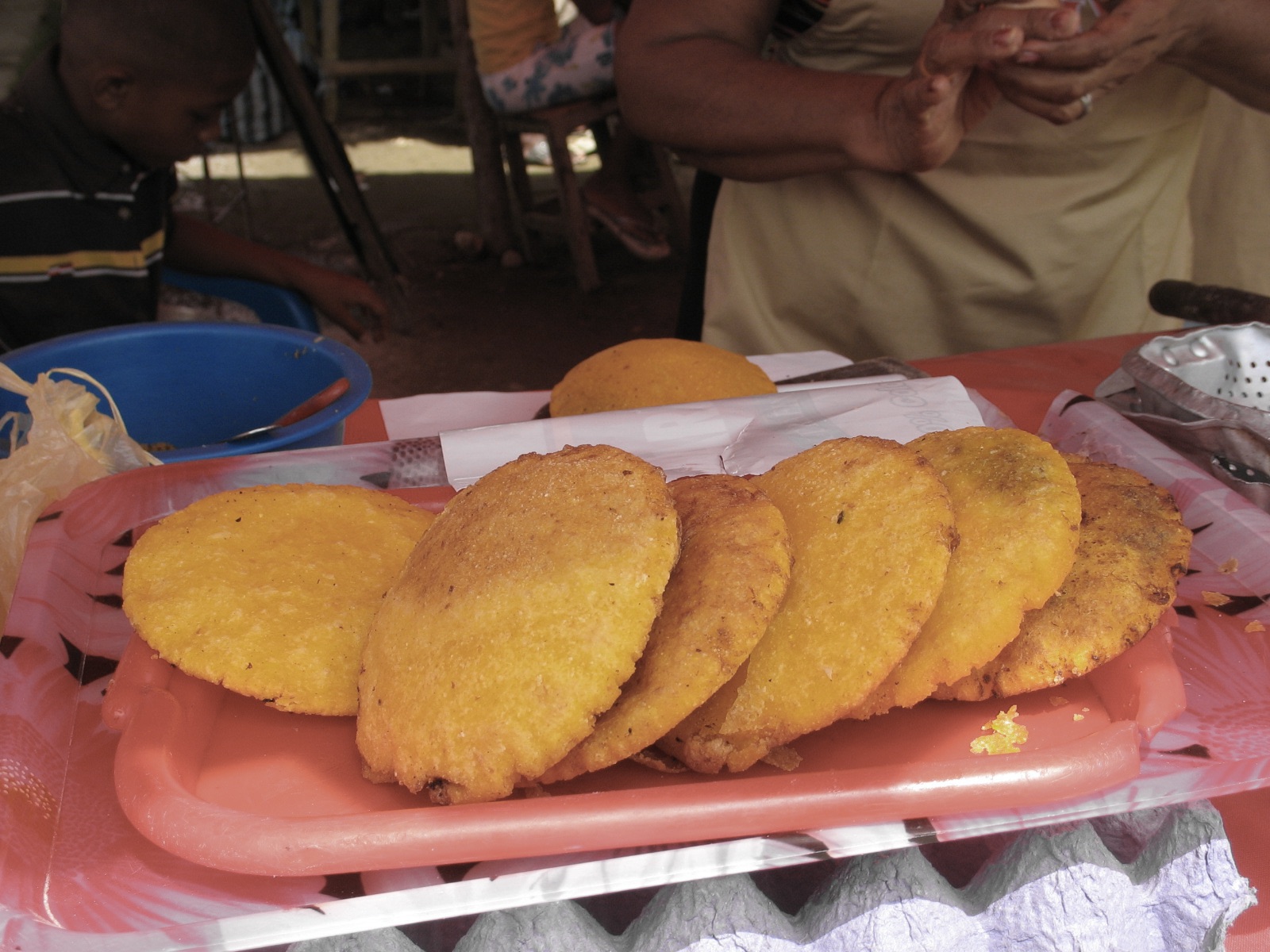
Arepas
Arepas are a classic Venezuelan meal that is very popular on this Caribbean island. They’re fluffy corn-based patties that look like a lighter version of pita bread. They are usually cooked on a clay slab and get crispy on the exterior while staying soft on the inside. They are then sliced in half and packed with a variety of things such as cheese, pork, maize, avocado, or basically anything your heart desires.

Yena Keshi
Yena Keshi is commonly regarded as Curaçao’s distinctive dish. This exquisite concoction is a superb representation of Curaçao’s history’s blending of cuisines and cultures. It is made out of a huge round ball of cheese, generally Edam or Gouda, that is packed with seasoned meat (chicken, pig, etc.), olives, capers, onions, and tomatoes before being baked to perfection. Yum!
What's the Travel Budget for Curaçao?
Flights
- Flights start at roughly $280 from nearby countries. Tickets however on average cost around $550 and can cost way more depending on which class and from which country you depart from.
Accommodation
- Nomad Backpacking style travelers can expect to spend around $150 for a week
- Budget travelers can expect to spend around $350 for a week
- Mid-range travelers can expect to spend around $700 for a week
- Luxury travelers can expect to spend around $1,100 for a week
Food Budget (Three meals and drinks)
- Nomad Backpacking style travelers can expect to spend around $15 per person per day
- Budget travelers can expect to pay around $25 per person per day
- Mid-range travelers on average would cost $30 to $45 per person per day
- Luxury travelers can expect to pay around $60 to $120 per person per day
Overall Budget Styles (Not including Flights, Tours, Transportation, or Car Rental)
- Nomad Backpacking style travelers can expect to spend roughly $250 for a week
- Budget travelers can expect to spend close to $420 for one person for a week
- Mid-range travelers can expect to spend approximately $710 for one person for a week
- Luxury travelers can expect to spend around $1,750 for one person for a week
Flights
- Flights start at roughly $280 from nearby countries. Tickets however on average cost around $550 and can cost way more depending on which class and from which country you depart from.
Accommodation
- Nomad Backpacking style travelers can expect to spend around $150 for a week
- Budget travelers can expect to spend around $350 for a week
- Mid-range travelers can expect to spend around $700 for a week
- Luxury travelers can expect to spend around $1,100 for a week
Food Budget (Three meals and drinks)
- Nomad Backpacking style travelers can expect to spend around $15 per person per day
- Budget travelers can expect to pay around $25 per person per day
- Mid-range travelers on average would cost $30 to $45 per person per day
- Luxury travelers can expect to pay around $60 to $120 per person per day
Overall Budget Styles (Not including Flights, Tours, Transportation, or Car Rental)
- Nomad Backpacking style travelers can expect to spend roughly $250 for a week
- Budget travelers can expect to spend close to $420 for one person for a week
- Mid-range travelers can expect to spend approximately $710 for one person for a week
- Luxury travelers can expect to spend around $1,750 for one person for a week
Flights
- Flights start at roughly $280 from nearby countries. Tickets however on average cost around $550 and can cost way more depending on which class and from which country you depart from.
Accommodation
- Nomad Backpacking style travelers can expect to spend around $150 for a week
- Budget travelers can expect to spend around $350 for a week
- Mid-range travelers can expect to spend around $700 for a week
- Luxury travelers can expect to spend around $1,100 for a week
Food Budget (Three meals and drinks)
- Nomad Backpacking style travelers can expect to spend around $15 per person per day
- Budget travelers can expect to pay around $25 per person per day
- Mid-range travelers on average would cost $30 to $45 per person per day
- Luxury travelers can expect to pay around $60 to $120 per person per day
Overall Budget Styles (Not including Flights, Tours, Transportation, or Car Rental)
- Nomad Backpacking style travelers can expect to spend roughly $250 for a week
- Budget travelers can expect to spend close to $420 for one person for a week
- Mid-range travelers can expect to spend approximately $710 for one person for a week
- Luxury travelers can expect to spend around $1,750 for one person for a week
Flights
- Flights start at roughly $280 from nearby countries. Tickets however on average cost around $550 and can cost way more depending on which class and from which country you depart from.
Accommodation
- Nomad Backpacking style travelers can expect to spend around $150 for a week
- Budget travelers can expect to spend around $350 for a week
- Mid-range travelers can expect to spend around $700 for a week
- Luxury travelers can expect to spend around $1,100 for a week
Food Budget (Three meals and drinks)
- Nomad Backpacking style travelers can expect to spend around $15 per person per day
- Budget travelers can expect to pay around $25 per person per day
- Mid-range travelers on average would cost $30 to $45 per person per day
- Luxury travelers can expect to pay around $60 to $120 per person per day
Overall Budget Styles (Not including Flights, Tours, Transportation, or Car Rental)
- Nomad Backpacking style travelers can expect to spend roughly $250 for a week
- Budget travelers can expect to spend close to $420 for one person for a week
- Mid-range travelers can expect to spend approximately $710 for one person for a week
- Luxury travelers can expect to spend around $1,750 for one person for a week
If you want to know what to pack, read this list below:
- This is a casual tropical Island with Caribbean weather that tends to be warm or hot in the summer, and mild in the winter, dress accordingly
- Raincoat or Light Waterproof Jacket
- Hiking Boots or Sturdy Sneakers (Shoes You Don’t Mind Getting Wet)
- Sunscreen
- Insect Protection – Repellent and Clothing
- Sunglasses and Sun Hat
- Water Shoes
- Beach Towels/Sarong
- Dry Bag
- Money Belt or Cross Bag
- Portable Medical Kit
- Flashlight or Headlamp
- Copies of your passport.
- Get all the needed vaccinations before traveling
- A power bank is a must in any travel.
- Always have some cash with you just in case there are no ATMs and if you are dealing with a business that solely accepts cash
- Get yourself an adapter for your gadgets
- 1 toothbrush
- 1 tube of toothpaste
- 1 razor
- 1 package of dental floss
- 1 small bottle of shampoo
- 1 small bottle of shower gel
- 1 towel
- Deodorant
- Band-Aids
- Hydrocortisone cream
- Antibacterial cream
- Earplugs
- Tylenol
- Hand sanitizer (germs = sick = bad holiday)
- A key or combination lock
- Zip-lock bags
- Plastic bags (great for laundry)
- Universal charger/adaptor
- LifeStraw (A water bottle with a purifier)
- 1 dry shampoo spray & talc powder
- 1 hairbrush
- Makeup you use
- Hairbands & hair clips
- Feminine hygiene products
Clothing For Boys
- 1 pair of jeans or khaki pants
- 1 pair of shorts
- 1 bathing suit
- 5 T-shirts
- 1 long-sleeved T-shirt
- 1 pair of flip-flops
- 1 pair of sneakers
- 6 pairs of socks
- 5 pairs of boxer shorts
Clothing For Girls
- 1 swimsuit
- 1 sarong
- 1 pair of stretchy jeans
- 1 pair of leggings
- 2-3 long-sleeve tops
- 2-3 T-shirts
- 3-4 spaghetti tops
- 1 light cardigan
Want to plan your own trip, here are some of the best resources that can help you
- Skyscanner – They search small websites and budget airlines that larger search sites tend to miss. They are hands down the number one place to start.
- Momondo – This is another favorite flight search engine because they search such a wide variety of sites and airlines. Always check here too.
- Booking.com – The best all-around booking site that constantly provides the most affordable and lowest rates. They have the widest selection of budget accommodation.
- Couchsurfing – This website allows you to stay on people’s couches or spare rooms for free. It’s a great way to save money while meeting locals who can tell you the ins and outs of their city. The site also lists events you can attend to meet people (even if you’re not staying with someone).
- Intrepid Travel – If you want to do group tours, go with Intrepid. They offer good small group tours that use local operators and leave a small environmental footprint.
- Grassroots Volunteering – For volunteering, Grassroots Volunteering compiles a list of good local volunteer organizations that keep the money within the community.
- Get Your Guide – Get Your Guide is a huge online marketplace for tours and excursions. They have tons of tour options available in cities all around the world, including everything from cooking classes, walking tours, street art lessons, and more! It has the world’s largest collection of things to do with more than 30,000 activities in 7500 destinations.
- SafetyWing – Safety Wing offers convenient and affordable plans tailored to digital nomads and long-term travelers. They have cheap monthly plans, great customer service, and an easy-to-use claims process that makes it perfect for those on the road.
- Trip Advisor: Check the reviews and then book your accommodation. TripAdvisor is where you go when you want to compare prices with multiple accommodation providers.
- VRBO: is the main search engine to use when you are looking for a home or apartment rental. It can sometimes be cheaper than hotels and it is the best way to stay in areas that offer a more local feel.
- Hostelworld: With one of the largest databases of hostels in the world, Hostelworld is the go-to site when you are looking for budget accommodation.
- Rome 2 Rio: If you want to see how to get somewhere by plane, train, bus, ferry, or car Rome2Rio lays it all out for you as well as related costs.
- World Nomads Insurance: When traveling you should always have travel insurance. We have found the best bang for your buck is by far World Nomads.
Final Thoughts on Curaçao
With its diverse structures and heritage, breathtaking and unique landmarks, unbelievable kindness, exciting songs and dances, and dazzling picture-perfect backdrop of forests, pristine beaches, and city walls, Curaçao has a refined and rich heritage that can be seen across the country dating back to at least the 15th century AD. A fantastic option for anyone seeking one of the best Caribbean holiday locations. Curaçao is breathtakingly beautiful, with magnificent national treasures, flora and fauna, and spectacular scenery. Would you visit Curaçao?
Have you ever been to Curaçao? Please share your thoughts and experiences in the comments area below.